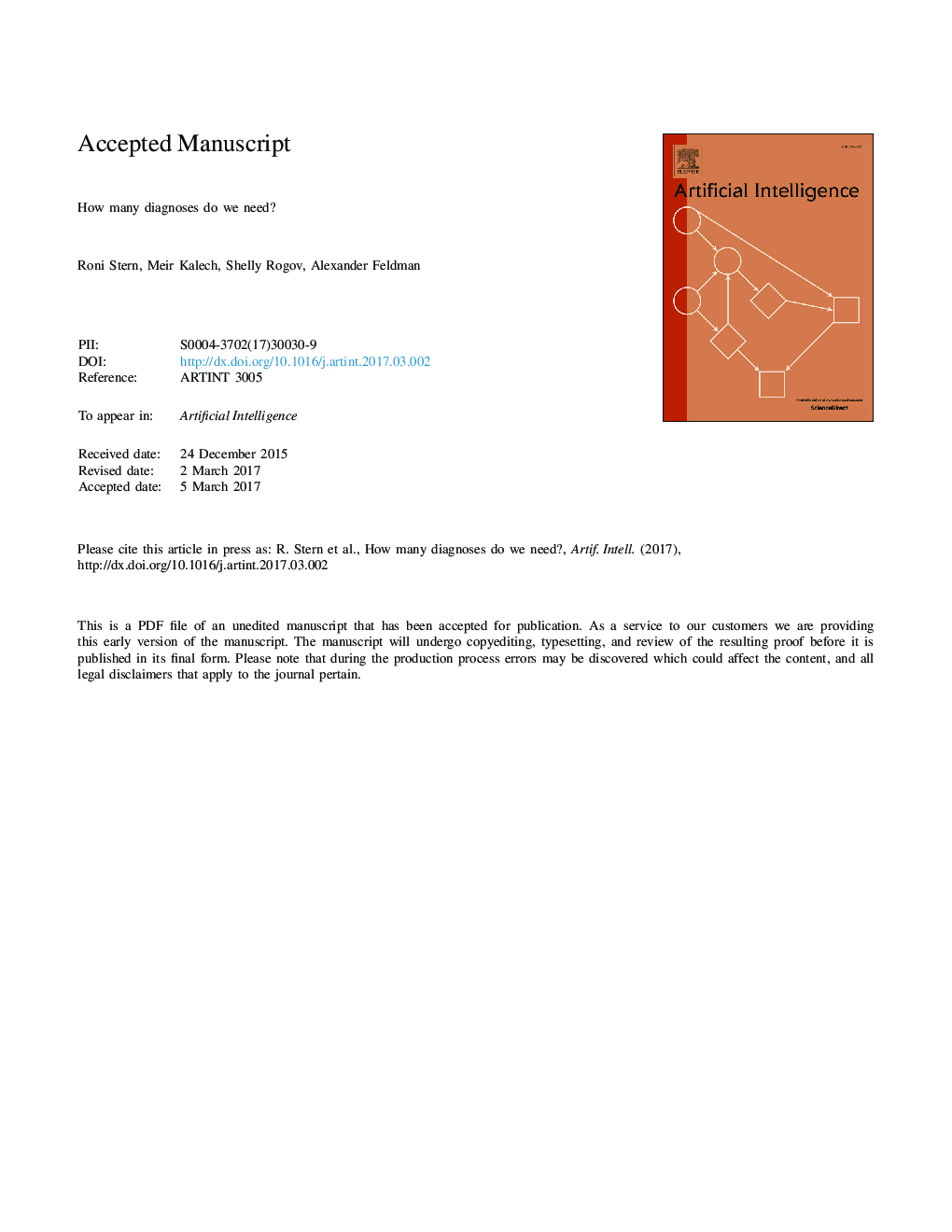| Article ID | Journal | Published Year | Pages | File Type |
|---|---|---|---|---|
| 4942090 | Artificial Intelligence | 2017 | 51 Pages |
Abstract
A known limitation of many diagnosis algorithms is that the number of diagnoses they return can be very large. This is both time consuming and not very helpful from the perspective of a human operator: presenting hundreds of diagnoses to a human operator (charged with repairing the system) is meaningless. In various settings, including decision support for a human operator and automated troubleshooting processes, it is sufficient to be able to answer a basic diagnostic question: is a given component faulty? We propose a way to aggregate an arbitrarily large set of diagnoses to return an estimate of the likelihood of a given component to be faulty. The resulting mapping of components to their likelihood of being faulty is called the system's health state. We propose two metrics for evaluating the accuracy of a health state and show that an accurate health state can be found without finding all diagnoses. An empirical study explores the question of how many diagnoses are needed to obtain an accurate enough health state, and an online stopping criteria is proposed.
Related Topics
Physical Sciences and Engineering
Computer Science
Artificial Intelligence
Authors
Roni Stern, Meir Kalech, Shelly Rogov, Alexander Feldman,
